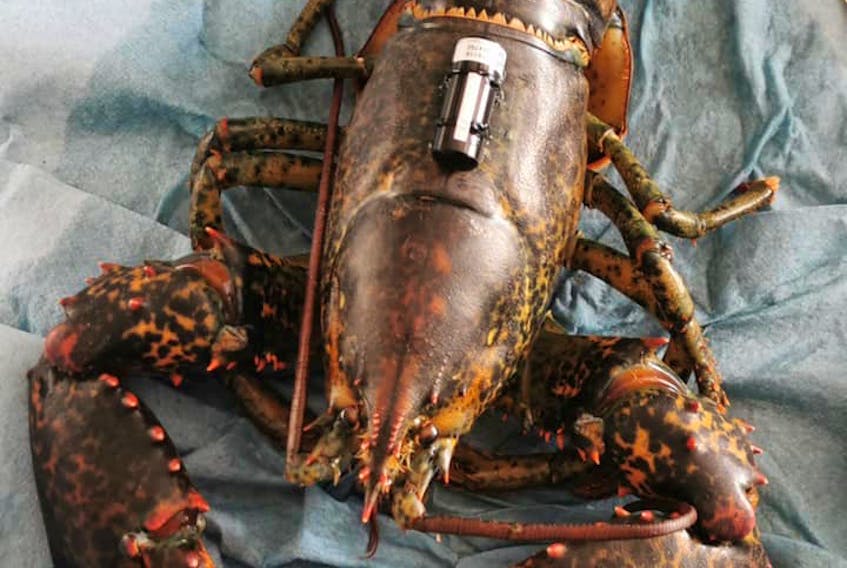ESKASONI, N.S. — Mi’kmaq researchers are listening in on the secret lives of lobsters and eels in the Bras d’Or Lake.
Skyler Jeddore of the Unama’ki Institute of Natural Resources, which is the voice of the five Cape Breton Island First Nation communities, is working as the community liaison and field technician for the collaborative project with Dalhousie University’s Ocean Tracking Network.

They plan to catch and tag a total of 40 lobsters and 40 eels then release them back into the lake with acoustic transmitters that are glued onto the lobster’s carapace and surgically implanted into the eels. There are 42 receivers anchored at various areas of the Bras d’Or that will log each tag’s unique ping when an animal passes within range. Researchers will then use a special microphone to retrieve the data.
Jeddore said so far they have tagged 25 lobsters and 18 eels and the information they provide will give them valuable insight. He said the lobster, which is called jakej in Mi’kmaq, and the American eel, or kataq, are of special interest because their movements, migrations and habitat use are not well documented. Getting that information will be key to identifying, preserving and protecting habitats used by these species.
“We’re looking for the migratory paths to see where they’re headed, just to see generally what their migration patterns are,” he said.
“It’s an opportunity for communities to research what they value through their own vision and values, and supporting informed decision making.”
The eel holds immense spiritual and cultural significance for the Mi’kmaq people.
For thousands of years, the Mi’kmaq in Cape Breton harvested eels, traditionally using weirs in rivers, as well as spearing them in the Bras d’Or Lake. They were a main food source, particularly in the winter, and their skins were used as moccasin soles and as bindings. Oil from the eels was also used to treat ear infections and was even added to baby bottles for nutrition and to help children acquire a taste for them.
“The eel has been the staple food for the Mi’kmaq people for eternity,” said Jeddore. “Most of my food growing up was eel. And during community events and at ceremonies, it was the main dish.”
In recent years, however, their numbers have declined, making it even more important to find out how they spend their 25 years here before they return to the Sargasso Sea, where they are all born, to spawn and die.
“I do a lot of talking with elders and they’re always saying there’s not as many as there used to be but we’re hoping to get these numbers back up,” said Jeddore.
EEL HIGHLIGHT REEL
- The life of every eel, or kataq in Mi’kmaq, begins in the Sargasso Sea, a large area of the Atlantic Ocean east of Bermuda
- Born in seaweed, tiny larvae drift for months in the Gulf Stream before finding their way to Unama’ki and other coastal areas. By the time they reach the Bras d’Or Lake, they are called glass eels because they are transparent
- As the eels move into fresh water to make their homes in rivers, ponds and lakes, they gain colour and become elvers
- Here they become yellow eels and grow for up to 25 years before leaving as silver eels on the long trip back to the Sargasso Sea to spawn and die
- When adult eels change from yellow to silver, the shape of their fins change so they can swim better, their eyes get larger, and they stop eating. This helps them make their long journey home
- Habitat loss, dams, overfishing, disease, and perhaps global warming, may be causing problems for eel
Source: Unama’ki Institute of Natural Resources
RELATED:
- How lobsters are tracked by the Ocean Tracking Network
- SPECIAL FEATURE: Searching for sharks in Cape Breton waters
- Fish a big hit at annual Bras d’Or Watch activities in Cape Breton
- Abundance of jellyfish in Bras d’Or Lakes?
- Lobster bait challenge winner receives $30,000 prize at Ignite Labs announcement in Yarmouth
- Crustacean elation: Is a Nova Scotia lobster boom the new normal?









